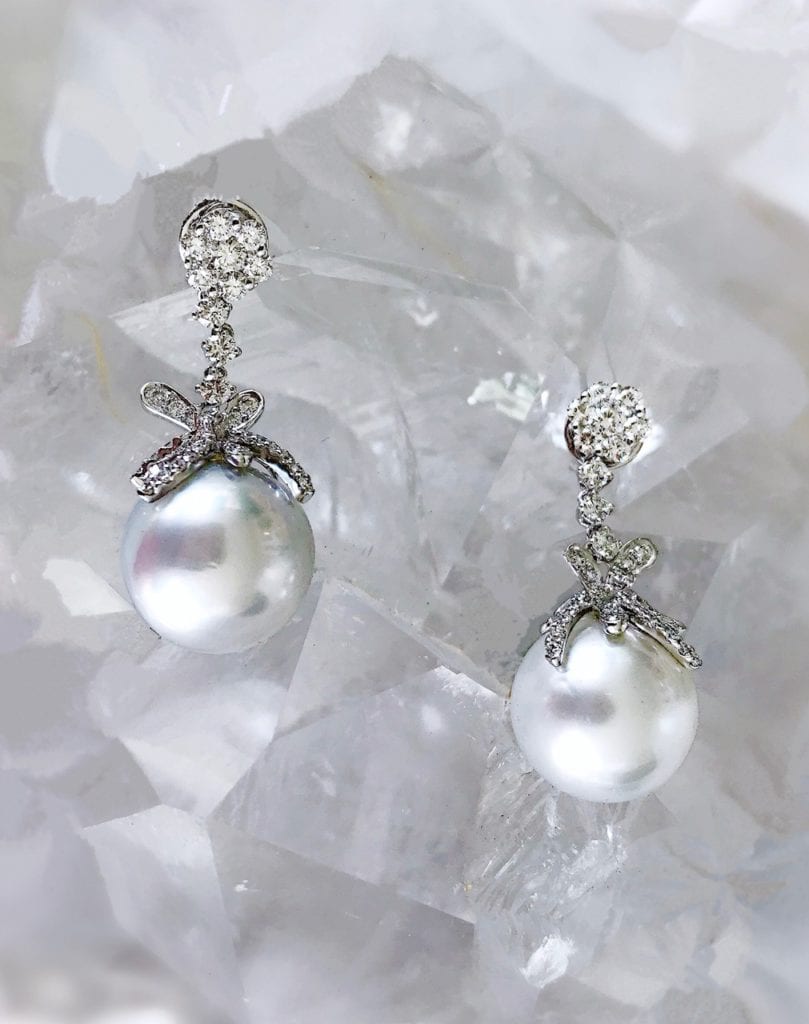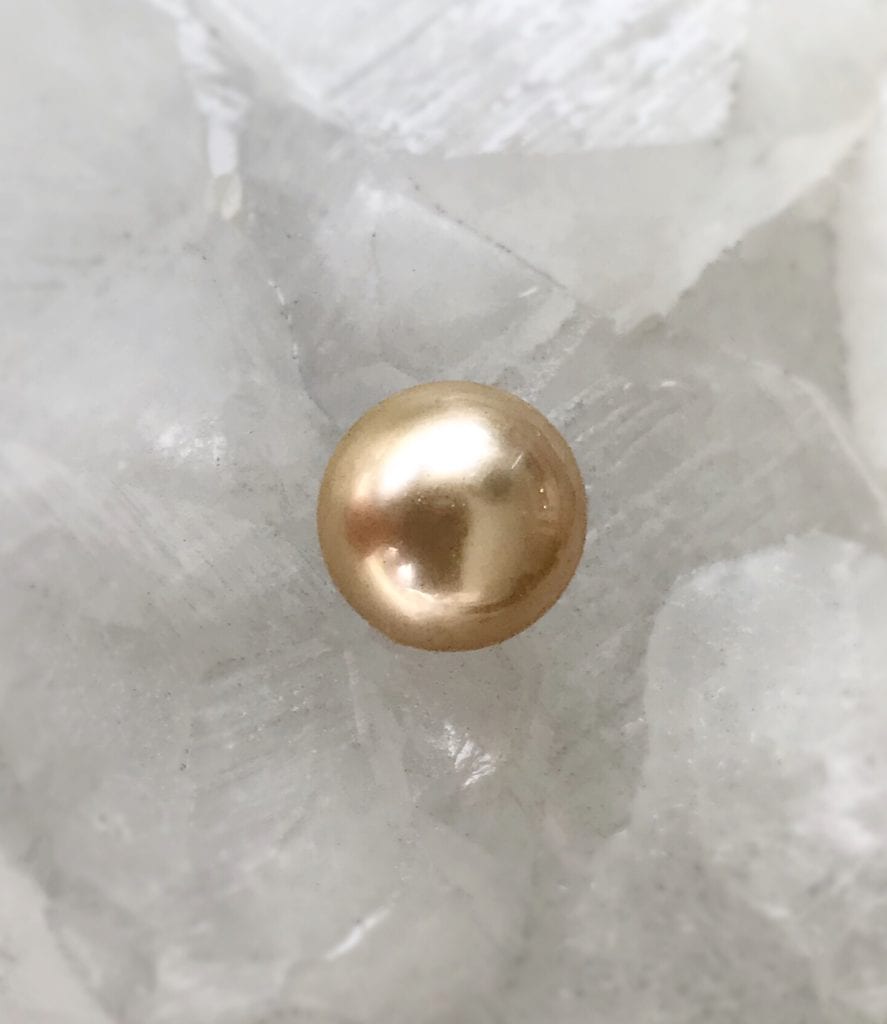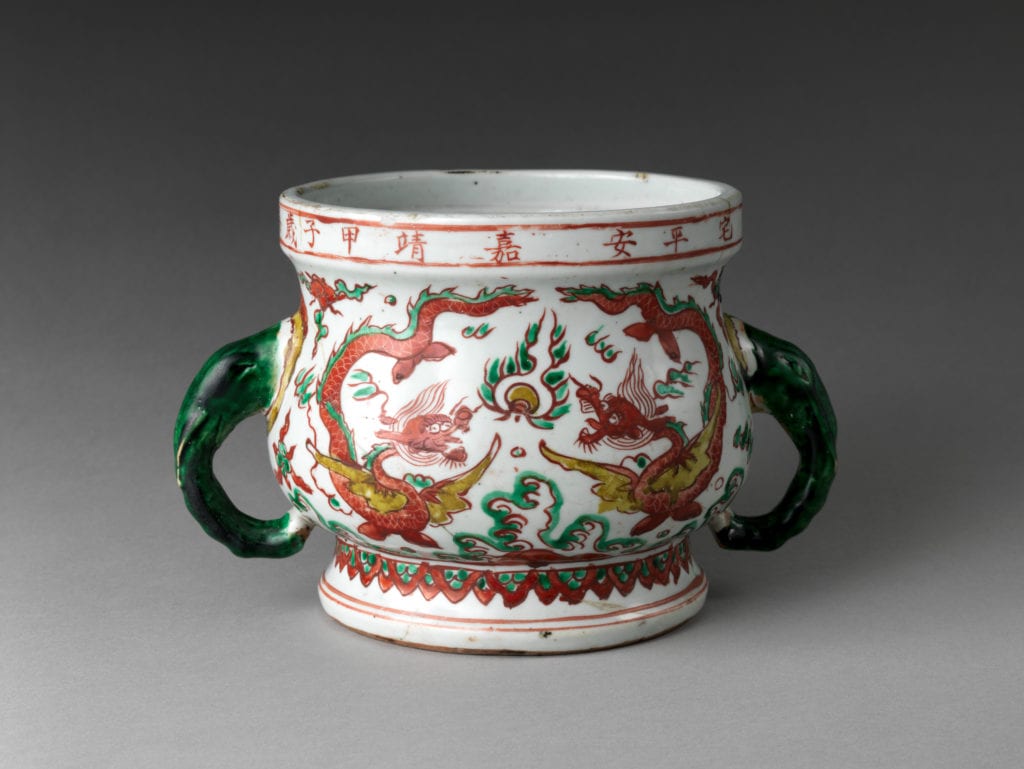Tear Drop Pearl Earrings From Metropolitan Museum of Art
Pearls rank among the most pop gems in the world. With a serene beauty, they make perfect complements to flashier gems. Yet, they also possess an elegance that can shine alone. Of form, their distinctive appearance and watery origins have inspired pearl symbolism and lore for centuries.
Kickoff recorded in history past a Chinese historian in ii,206 BCE, pearls have been valued as gemstones for millennia. Yet, there's a major divergence between pearls and other well-known gems like diamonds, emeralds, rubies, and sapphires. While these others course as minerals cloak-and-dagger, pearls have organic origins. They form within diverse species of freshwater and saltwater mollusks. Merely put, pearls are gems just non stones. Nevertheless, the ancients fabricated little distinction between pearls and actual stones.
The Moon, Water, and Pearl Symbolism
Pearls, peculiarly freshwater varieties, tin can occur in varied and unusual but cute shapes. However, soft white lustrous orbs, more commonly establish amidst saltwater pearls, accept go an idealized standard. Of form, this shape strongly evokes the Moon.
Not surprisingly, many cultures have made lunar associations with pearls. These connections are further reinforced by the Moon's association with the watery domain where pearls are born.
In ancient Vedic texts, the pearl is born of the Earth's waters and the heaven's powers, fertilized by a flash of lightning. Information technology'due south considered to be the daughter of the Moon. In Western cultures, the pearl has astrological associations with the planet Venus. Similar pearls, the goddess of love came from the ocean.
Due to their shape, pearls accept another watery association. Some stories say white pearls are tears shed by the gods. One legend says the tears Eve cried when she was banished from Eden turned to pearls.
Pearl Symbolism and Wealth
Today, natural pearls are extremely rare, which increases their value considerably. The search for the perfect pearl, whether natural or farmed, has gone on for centuries. In fact, testify of pearl cultivation goes back to at least the xiiith century CE. In ancient times, the expense of perfect pearls gave ascension to a curious spell for increasing wealth. The pulley would select a particularly fine pearl, infuse it with the desire for riches, and then throw it abroad into a rubbish heap. The idea behind this sympathetic magic practice was that someone who could throw away pearls was rich indeed.
The rarity and expense of pearls also contributed to some common expressions still used today. In The Bible, Matthew 7:vi admonishes against throwing "pearls earlier swine," wasting what is valuable on fruitless endeavors. We all the same commonly refer to precious advice and counsel as "pearls of wisdom." In the millennia earlier perliculture, pearls were very hard to find and harvest. When wisdom is given, treasure it like a rare pearl.

xiii mm white South Body of water pearl earrings with silverish overtones in diamond pavé ribbon settings. © Urth Kandi Jewelry. Used with permission.
Are Pearls Feminine Jewels?
Pearl'south associations with the Moon and Venus seem to reinforce the popular perception that it'southward a feminine precious stone. The mineralogist George Kunz, in his 1913 work, The Curious Lore of Precious Stones, fabricated this comparison between diamond and pearl:
The diamond is to the pearl as the lord's day is to the moon, and nosotros might well call i the "king-gem" and the other the "queen-gem." The diamond, like a knight of quondam — brilliant and resistant, is the emblem of fearlessness and invincibility; the pearl, like a lady of onetime — pure and off-white to look upon, is the emblem of modesty and purity.

This celebrated 1665 painting by Johannes Vermeer, Girl with a Pearl Earring, has inspired a novel, a play, and a film. From the collection of the Mauritshuis, The Hague, Netherlands. Public Domain.
Pearls and Brides
This idea isn't express to chivalric notions from over a hundred years agone. Western cultures still unremarkably associate the colour white with innocence and purity, which in turn is associated with weddings. Equally white gems, pearls remain popular gifts for brides. (Information technology's fifty-fifty said pearls can keep newlywed brides from crying). Furthermore, as the traditional June birthstone in Western cultures, pearls have another popular link with the idealized month for weddings and brides. Brides in Asia as well wear pearl necklaces every bit symbols of fertility.
The Gem of Kings
Fifty-fifty today, despite concerted marketing efforts, pearls are worn commonly by women but rarely past men. However, go on in heed that although this association of pearls with item ideas of femininity is strongly engrained in our cultural psyche, it wasn't always so and need not be. In ancient times, kings wore ropes of pearls as a mark of wealth.

Ama, Japanese for "body of water person," are Japanese female pearl divers. They dive without scuba gear. When Mikimoto Kokichi began to cultivate Akoya pearls in the 1920s, these women were crucial to his success. Photo past ジェームズ ディズレー. Licensed under CC Past-SA 2.0.
Colors and Legends
Few gems are as varied in shape and colour equally pearls. Thus, it'due south not surprising that pearls of colors other than white have also inspired legends.
According to Polynesian lore, the god Lono came down on a rainbow to a princess, carrying black pearls with him as gifts. The black pearls, with their cute iridescence, were imbued with the colors of the rainbow.
Traditionally, the Chinese dear golden pearls, believing they bring prosperity and luck. Chinese artworks often describe dragons holding golden pearls in their mouths or claws.

9 mm golden South Bounding main pearl with lite to medium color. © Urth Kandi Jewelry. Used with permission.
Pearls and Chinese Dragons
One early on Chinese myth related that pearls fell from the sky when dragons fought amongst the clouds. Some other myth states that pearls originated as raindrops swallowed by oysters. In one ancient tale, a boy plant a miraculous pearl. When placed in a jar with just a bit of rice, information technology filled the jar with rice the side by side day. After his neighbors discovered this, they tried to steal it. The boy swallowed the pearl to protect it. As a result, he became a dragon.

This porcelain incense burner depicts dragons chasing a pearl. The Wu family unit offered this detail to the Temple of the Lord of the Black Sky for the protection of their home. People's republic of china, Ming Dynasty, 1564 CE, 26.7 cm diameter. Gift of Stanley Herzman, in memory of Gladys Herzman, 1997. Metropolitan Museum of Art, New York. Public Domain.
Pearl Symbolism and the Soul's Journey
In many ancient Asian cultures, the shine wholeness and seemingly "magical" appearance of pearls in such lowly lifeforms every bit oysters indicated the presence of divinity. The pearl represented the journey of the soul or spirit along the path to perfection. In ancient burials, mourners placed pearls in the mouths of the deceased. Since pearls apparently contained the principles of life, they hoped they could assist the dead on their journeys beyond. Mourners also decorated burial gifts and clothes with pearls. This seemingly ritual act may accept started equally a practical act. Pearls were amid the offset materials used for beads. Their natural bead-similar shape made them piece of cake to use for ornament and yielded lovely results.
Are Pearls Unlucky?
The violence associated with removing pearls from their natural habitation (living creatures) has given them a reputation as unlucky. However, most of the superstitions surrounding the unluckiness of pearls become back to the platonic of their purity. Whatever pearl jewelry with malice or jealousy in its by builds a reputation for bringing bad luck to those sharing the same traits. If given in love with a pure center, a pearl always symbolizes purity, fertility, and the cycles of life.
Source: https://www.gemsociety.org/article/history-legend-pearls-gems-yore/
0 Response to "Tear Drop Pearl Earrings From Metropolitan Museum of Art"
Post a Comment